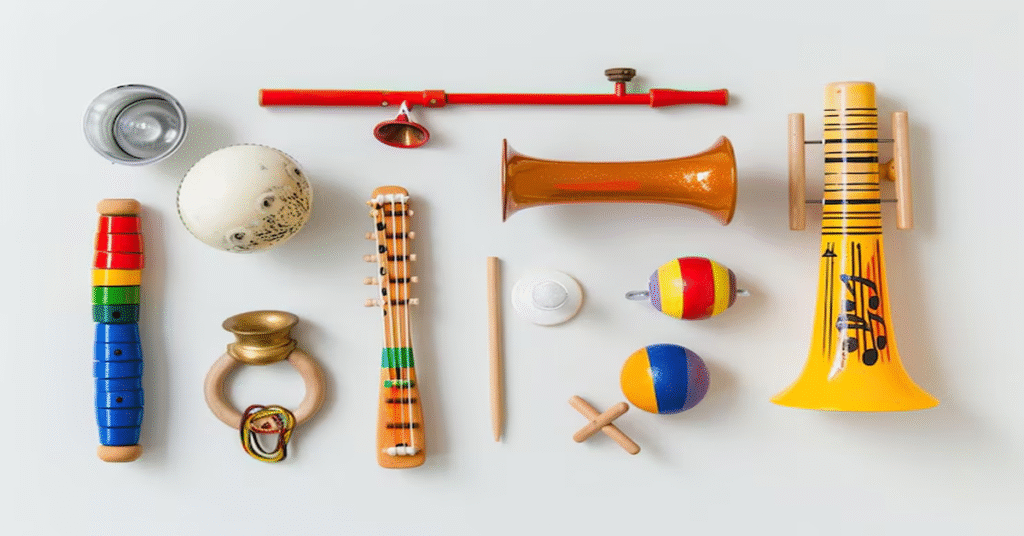The diabolo, often known as the “Chinese yo-yo,” is a captivating skill toy that has enthralled audiences and performers for centuries. Combining elements of juggling, balance, and creative expression, diabolo has evolved from a simple folk pastime into a sophisticated performance art. Whether it’s showcased in street performances, circuses, or world-class juggling festivals, diabolo continues to fascinate and challenge both beginners and seasoned professionals alike.
In this comprehensive article, we will explore the rich history, physics, techniques, cultural significance, and the modern-day evolution of diabolo. By the end, you’ll have a deep understanding of this unique object and the art form it represents.
Origins and History of the Diabolo
Ancient Roots in China
The diabolo traces its roots back thousands of years to ancient China. Early forms of the diabolo were known as Kongzhu and made primarily from bamboo and wood. These early designs produced a distinctive humming sound, believed to ward off evil spirits and bring good luck.
Spread to Europe and the West
In the 18th and 19th centuries, European explorers and traders brought the diabolo back from China. It quickly gained popularity among the European aristocracy and was known as the “devil on two sticks”—a mistranslation that led to the name “diabolo,” derived from the Greek diabolos, meaning “to throw across.”
By the early 20th century, the diabolo had become a popular pastime in Britain, France, and other parts of Europe. Manufacturers began to produce diabolos with rubber or metal parts, making them more durable and easier to use.
Anatomy of a Diabolo
Basic Components
A diabolo typically consists of three main parts:
- The Cups: Two symmetrical cups form the outer parts of the diabolo. They can be made from plastic, rubber, or even metal.
- The Axle: Located between the cups, the axle allows the diabolo to spin freely. Modern diabolos often feature wide axles for better control and trick execution.
- The Sticks and String: Users manipulate the diabolo using two sticks connected by a string, typically made from durable nylon or polyester.
Types of Diabolos
There are several variations:
- Fixed Axle Diabolos: Traditional style where the axle does not rotate independently.
- Bearing Axle Diabolos: Feature a one-way bearing allowing for longer spin times and advanced tricks.
- Mini Diabolos: Smaller versions suited for fast, technical tricks.
Physics Behind the Diabolo
Gyroscopic Stability
When spun, the diabolo demonstrates gyroscopic stability, helping it maintain balance and resist tipping over. The faster it spins, the more stable it becomes.
Precession and Control
The diabolo’s precession (its tendency to rotate around a vertical axis) is crucial for control. Skilled players manipulate this property using the string and sticks to maintain or change the diabolo’s orientation.
Friction and Spin
Friction between the string and the axle both accelerates and slows the diabolo. Players learn to optimize friction to keep the diabolo spinning smoothly throughout their performance.
Basic Techniques and Tricks
Starting the Spin
To begin, the diabolo is placed on the string and gently rolled back and forth while pulling upward with one stick to create spin.
Acceleration
Players accelerate the diabolo by quickly lifting one stick while keeping the other steady, increasing rotational speed.
Basic Tricks
- The Elevator: The diabolo climbs the string vertically.
- The Cat’s Cradle: The string is woven into complex patterns while maintaining diabolo spin.
- The Toss: The diabolo is thrown into the air and caught back on the string.
Advanced Tricks and Combinations
Integrating Multiple Diabolos
Advanced performers often use two or even three diabolos simultaneously, creating intricate patterns and increasing the complexity of their act.
Vertax (Vertical Axis) Play
Vertax diabolo play involves spinning the diabolo around a vertical axis. This requires mastering different throwing and catching techniques and provides a visually stunning performance.
Suicides and Grinds
- Suicides: The player releases one or both sticks momentarily, allowing the diabolo to continue spinning before recapturing it.
- Grinds: The diabolo spins while resting on one of the sticks or the string itself, creating a grinding effect.
Diabolo in Performance Art
Circus and Street Performances
Circuses worldwide have incorporated diabolo acts into their repertoire, combining skill with theatrical flair. Street performers also use diabolo to entertain passersby, often blending it with other juggling or acrobatic elements.
Competitive Diabolo
Diabolo competitions are held at juggling festivals and skill toy conventions. Categories often include technical mastery, creativity, and overall presentation.
Fusion with Other Arts
Modern performers sometimes integrate diabolo with dance, music, or visual effects, expanding its artistic boundaries.
Cultural Significance
Diabolo in Chinese Festivals
In China, diabolo remains a traditional art form showcased at festivals and cultural celebrations. Master performers are often revered for preserving this aspect of cultural heritage.
Global Community
Online forums, YouTube channels, and international festivals have fostered a global diabolo community where enthusiasts share tricks, tutorials, and performances.
The Modern Diabolo Renaissance
Innovations in Design
Modern materials like carbon fiber, high-quality plastics, and precision bearings have revolutionized diabolo design, making it more accessible and versatile.
Online Learning and Sharing
The internet has allowed diabolo skills to spread rapidly. Online tutorials, virtual workshops, and social media have made it easier than ever to learn and share diabolo techniques.
Diabolo as Exercise
Beyond performance, diabolo is recognized as a form of physical exercise that enhances coordination, balance, and even mental focus.
Choosing the Right Diabolo
For Beginners
Beginners should choose a medium-sized fixed axle diabolo. These are easier to control and more forgiving while learning basic skills.
For Intermediate Players
Players ready to explore more tricks may opt for wider axle or bearing diabolo models, allowing for longer spin times and complex moves.
For Advanced Users
Advanced users often select diabolos tailored to specific styles (e.g., Vertax or multiple diabolo play), choosing lightweight or heavyweight models accordingly.
Diabolo Safety Tips
- Practice in Open Spaces: Always practice in an area free of obstacles and fragile objects.
- Use Protective Gear: Beginners may use gloves or wrist guards to prevent string burns.
- Inspect Equipment Regularly: Check sticks, strings, and diabolo parts for wear to prevent accidents.
Educational and Developmental Benefits
Cognitive Skills
Diabolo play enhances hand-eye coordination, spatial awareness, and timing.
Physical Fitness
It provides cardiovascular exercise and improves agility and balance.
Mental Well-being
Like other skill toys, diabolo can be meditative, reducing stress and promoting mental focus.
Famous Diabolo Performers and Groups
Tony Frebourg
A renowned diabolo artist known for his innovative tricks and breathtaking performances.
Cirque du Soleil Artists
Several Cirque du Soleil shows have featured diabolo acts, blending the skill toy with high-level artistry and stagecraft.
Online Influencers
Platforms like YouTube and Instagram host a range of talented diabolo enthusiasts who share tutorials, trick compilations, and creative performances.
Diabolo Around the World
Asia
In China, diabolo continues to be both a cultural tradition and a popular recreational activity.
Europe
European countries, particularly France and the UK, have vibrant diabolo communities with frequent conventions and competitions.
North America
The United States and Canada host juggling festivals where diabolo is prominently featured.
Building a Routine
Planning a Performance
Good diabolo performances tell a story or convey an emotion. Performers plan sequences that gradually increase in complexity and visual appeal.
Music and Choreography
Music selection and choreography can greatly enhance the impact of a diabolo act, synchronizing movements with rhythm and mood.
Community and Learning Resources
Local Juggling Clubs
Many cities have juggling clubs where diabolo players can meet, share skills, and practice together.
Online Platforms
Websites like Reddit’s r/diabolo, YouTube channels, and diabolo-dedicated forums provide extensive learning materials.
Workshops and Festivals
Annual festivals like the European Juggling Convention (EJC) and the International Jugglers’ Association (IJA) festival include diabolo workshops and performances.
The Future of Diabolo
Technological Integration
There is growing interest in incorporating LED lights and smart technology into diabolos for enhanced visual effects during performances.
Evolving Techniques
Players continue to push the boundaries of what’s possible, inventing new tricks and styles that keep the diabolo scene dynamic and innovative.
Cultural Preservation
Efforts are underway in various countries to preserve traditional diabolo styles while embracing modern adaptations.
Conclusion
The diabolo is much more than a toy; it is a fusion of history, physics, performance art, and cultural significance. From its ancient roots in China to modern stages and online platforms worldwide, the diabolo has continued to evolve, captivating new generations of performers and audiences alike. Whether practiced for fun, fitness, or artistry, diabolo offers a rewarding and endlessly creative pursuit. Its unique blend of skill, rhythm, and expression ensures that it will remain a beloved art form for many years to come.
FAQs
1. What is a diabolo made of?
Modern diabolos are typically made of durable plastics or rubber for the cups, a metal or plastic axle, and string usually made from polyester or nylon.
2. How long does it take to learn diabolo?
Basic skills can be learned within a few days to weeks, while advanced tricks may take months or even years of dedicated practice.
3. Can children play with a diabolo?
Yes, many diabolo models are designed specifically for children, offering lightweight construction and easier handling for young beginners.
4. What is the difference between fixed and bearing axle diabolos?
Fixed axle diabolos have a stationary axle, while bearing axle diabolos feature a one-way bearing allowing for longer spin times and smoother trick execution.
5. Is diabolo good exercise?
Absolutely. Playing with a diabolo improves coordination, balance, and provides a cardiovascular workout, making it both fun and beneficial for physical fitness.
6. Are there diabolo competitions?
Yes, diabolo competitions are held at juggling festivals and conventions worldwide, evaluating participants on technique, creativity, and performance artistry.







